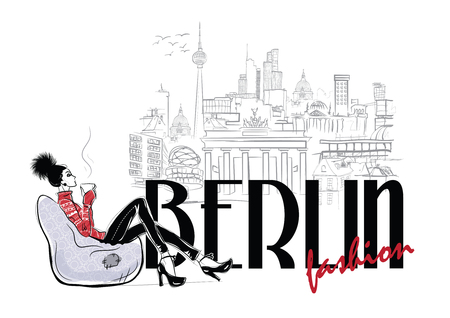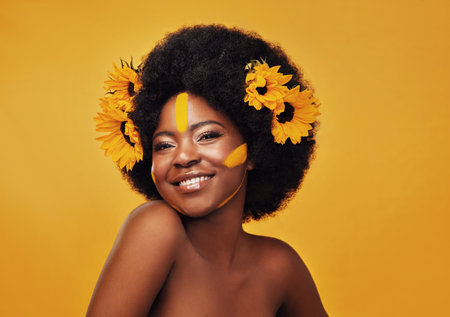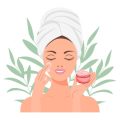Understanding Natural Hair Textures
When we talk about natural hair journeys in the United States, especially for Black women and men, were often talking about embracing coily and kinky textures that have been overlooked or misunderstood in a society where straight hair is seen as the default. Understanding what makes these hair types unique is the first step toward appreciating their beauty and cultural significance.
What Are Coily and Kinky Hair Textures?
Coily and kinky hair refers to very tight curls, often forming small zig-zags or spirals. These textures are most commonly categorized as Type 4 hair, which is further divided into 4A, 4B, and 4C. Each type varies in curl pattern, density, and shrinkage. Here’s a simple breakdown:
| Type | Curl Pattern | Texture | Shrinkage |
|---|---|---|---|
| 4A | Defined S-shaped coils | Soft, springy | High (up to 75%) |
| 4B | Z-shaped curls, less defined | Cotton-like, fluffy | Very high (up to 80%) |
| 4C | Tightest pattern, almost no defined curl | Dense, fragile | Extreme (up to 85% or more) |
The History Behind Natural Hair in America
For generations, Black people in America have faced pressure to straighten or chemically relax their hair to fit mainstream beauty standards. This pressure dates back to slavery times and continued through the Civil Rights era when “good hair” was seen as straighter hair. The natural hair movement gained momentum in the late 1960s with the “Black is Beautiful” campaign and again in the 2000s with social media communities encouraging self-love and cultural pride.
The Importance of Natural Hair in Black Identity
Embracing coily and kinky textures isnt just about style—its about reclaiming identity and heritage. For many Black Americans, choosing to wear their hair naturally is a powerful act of self-expression and resistance against societal norms that favor Eurocentric features. Its about celebrating diversity within the Black community itself, honoring ancestry, and feeling confident in ones authentic self.
2. Social Pressures to Conform
American Beauty Standards and Straight Hair
In the United States, beauty standards have long celebrated straight hair as the “ideal” look. Whether it’s in fashion magazines, TV shows, or social media, straight hair is often presented as sleek, professional, and desirable. This can make it tough for people with coily and kinky textures to feel seen and valued. Many folks grow up hearing messages—both direct and indirect—that their natural hair isn’t “good enough” or “polished.”
Challenges in Mainstream Spaces
Workplaces
At work, there’s often an unspoken rule that straight hair looks more professional. Natural hairstyles like afros, twists, braids, or locs might get labeled as “unruly” or “distracting.” Some people even face pressure to chemically straighten their hair or wear wigs to fit in.
Schools
School policies sometimes ban certain natural styles altogether. Students with braids, cornrows, or puffs might be told they’re breaking dress codes. This sends a clear message: To belong, you need to change your hair.
Media Representation
On TV and in movies, characters with straight hair are often cast as the main stars or romantic leads. Natural hair is rarely shown—or if it is, it’s sometimes used as a joke or a sign of rebellion.
Common Challenges Faced by People With Natural Hair
| Space | Examples of Challenges |
|---|---|
| Workplaces | Bias against natural styles; pressure to straighten; negative comments from coworkers |
| Schools | Dress code violations; bullying; lack of representation in yearbooks and events |
| Media | Stereotyping; underrepresentation; being typecast into limited roles |
The pressure to conform can feel overwhelming, making it hard for people to embrace their natural hair journeys fully. But by talking about these challenges openly, we can start changing the story together.

3. Personal Narratives and Community Support
For many people with coily and kinky hair textures, embracing their natural hair is more than just a style choice—its a journey of self-acceptance and cultural pride. In a society where straight hair is often seen as the norm, sharing personal stories and finding support within communities can make all the difference.
Real-Life Stories: The Power of Sharing
Everyone’s natural hair journey is unique, but certain experiences often overlap. Here are a few examples:
| Name | Story Highlight | Support System |
|---|---|---|
| Taylor (she/her) | Decided to stop relaxing her hair in college. Faced criticism from some family members but found encouragement through friends who were also going natural. | Close friends, online forums |
| Jordan (they/them) | Started wearing their coils proudly at work. Received mixed reactions but gained confidence after joining a local natural hair meetup group. | Meetup group, social media |
| Maya (she/her) | Loved experimenting with twist-outs and wash-and-go styles after watching YouTube tutorials. Inspired younger cousins to embrace their own textures. | YouTube community, family |
The Role of Family and Friends
Family and friends can either be a strong source of support or sometimes a challenge when someone starts wearing their hair naturally. Positive encouragement from loved ones helps build confidence. Even simple comments like “Your curls look amazing today!” go a long way. On the flip side, its common to hear concerns or questions like, “Why dont you just straighten it?” These moments can be tough, but they also offer opportunities for honest conversations about beauty standards and self-expression.
How Online Communities Make a Difference
The internet has become a powerful space for people on their natural hair journeys. Platforms like Instagram, TikTok, Reddit, and YouTube host vibrant communities where folks share styling tips, product recommendations, and personal victories—or frustrations—without judgment.
| Platform | Main Benefit | Popular Hashtags/Groups |
|---|---|---|
| Visual inspiration and connection with influencers | #NaturalHairJourney #TeamNatural | |
| YouTube | Tutorials for every curl type and concern | Naptural85, CurlyPenny channels |
| Anonymity for asking questions and sharing struggles | r/NaturalHair subreddit | |
| TikTok | Quick hacks and relatable content from real people | #CoilyHair #BlackGirlMagic |
Building Confidence Together
No one should have to navigate their natural hair journey alone. Whether its swapping tips in the comments section or showing up for each other at local events, the support found in these communities helps everyone celebrate their authentic selves—even in spaces where straight hair still dominates.
4. The Politics and Pride of Natural Hair
The Roots of Discrimination
In the United States, hair has always been more than just a style—it’s a statement. For people with coily and kinky textures, wearing natural hair can be both a celebration of heritage and a source of struggle. Historically, straight hair was seen as the beauty standard, and those who didn’t fit this mold often faced discrimination in schools, workplaces, and even in their communities. Stories about students being sent home for wearing afros or employees being told to straighten their hair are all too common.
Legislation: The CROWN Act
To fight back against this unfair treatment, activists and lawmakers have pushed for change. One major step forward is the CROWN Act—“Creating a Respectful and Open World for Natural Hair.” This law bans discrimination based on hair texture or protective styles like braids, locs, twists, or bantu knots in schools and workplaces.
| Year | Event/Legislation | Impact |
|---|---|---|
| 1960s-70s | Black is Beautiful Movement | Embraced afros and natural hair as symbols of pride and resistance |
| 2019 | CROWN Act Passed (California) | First state to ban hair-based discrimination; inspired similar laws nationwide |
| 2020s | CROWN Act Movement Expands | Over 20 states introduced or passed similar legislation; ongoing federal efforts continue |
Pride and Empowerment Movements
The shift toward embracing natural hair isn’t just about changing laws—it’s about changing hearts and minds. Social media campaigns like #BlackGirlMagic and #NaturalHairMovement celebrate beauty in all its forms. Influencers, celebrities, and everyday people share their stories online, helping others feel confident to show off their curls, coils, and kinks.
How Communities Are Leading Change
- Schools: More schools are adopting inclusive dress codes that honor natural hairstyles.
- Workplaces: Employers are updating policies to prevent bias against natural hair.
- Media & Fashion: Runways and magazines now feature more diverse hair textures than ever before.
The Journey Continues
The politics around natural hair show how something as personal as your hairstyle can connect to bigger issues like identity, equity, and self-love. By understanding these histories and current events, we can appreciate the pride behind every twist, curl, and coil—and support the movement for lasting change.
5. Care, Maintenance, and Representation
Practical Tips for Caring for Coily and Kinky Hair
Taking care of coily and kinky hair is all about understanding its unique needs. These hair types are naturally more fragile and prone to dryness, so they need extra love and attention. Here are some simple yet effective tips:
| Tip | Description |
|---|---|
| Moisturize Regularly | Use water-based leave-in conditioners, oils, and creams to lock in moisture and prevent breakage. |
| Gentle Detangling | Use wide-tooth combs or your fingers to detangle hair while it’s damp and coated with conditioner. |
| Protective Styles | Braids, twists, bantu knots, and updos help protect hair from damage and reduce daily manipulation. |
| Satin or Silk Accessories | Sleep on satin or silk pillowcases or wear a bonnet/scarf to minimize friction and retain moisture. |
| Avoid Heat Styling | Limit the use of flat irons and blow dryers; embrace air drying and natural styles instead. |
| Regular Trims | Trim ends every few months to prevent split ends and promote healthy growth. |
The Rise of Natural Hair Representation in American Culture
The visibility of natural hair has grown tremendously in recent years. From TV shows to ad campaigns, there’s a new wave of appreciation for coily and kinky textures. This shift is breaking down old beauty standards and empowering more people to embrace their authentic selves.
Natural Hair in Media and Fashion
- TV & Movies: Black actresses like Issa Rae (“Insecure”) and Yara Shahidi (“Grown-ish”) proudly rock their natural curls on screen, inspiring viewers everywhere.
- Fashion Runways: Designers now feature models with afros, twists, and locs, showcasing the beauty of textured hair in high fashion.
- Beauty Campaigns: Brands like SheaMoisture, Carol’s Daughter, and Pattern Beauty put natural hair front-and-center in their ads.
Why Representation Matters
Seeing coily and kinky hair celebrated sends a powerful message: all hair textures are beautiful. It helps young people grow up confident in their identity, encourages diversity in the beauty industry, and inspires everyone to embrace what makes them unique.
6. Moving Toward Authentic Self-Expression
Living in a society where straight hair is often seen as the “norm” can sometimes make it tough to fully embrace your natural coils and kinks. But every step you take on your natural hair journey is an act of self-love and bold self-expression. When you show up with your true texture—whether you rock a big Afro, twist-outs, locs, or protective styles—you’re making space for authenticity and cultural pride not just for yourself, but for everyone who sees you.
Embracing Your Natural Self: Why It Matters
Learning to love your natural hair isn’t just about style—it’s about honoring where you come from and who you are. For many, coily and kinky hair carries deep cultural roots that tell a story of resilience, creativity, and community. By choosing to wear your hair naturally, you celebrate those stories and keep traditions alive while inspiring others to do the same.
Ways to Show Self-Love Through Your Hair
| Action | How It Helps |
|---|---|
| Experimenting with New Styles | Encourages creativity and confidence in your look. |
| Learning Proper Hair Care | Builds self-respect by investing time in yourself. |
| Joining Community Groups | Connects you with support, tips, and shared experiences. |
| Educating Others About Natural Hair | Raises awareness and challenges stereotypes. |
| Celebrating Small Wins (like growth or mastering a style) | Keeps motivation high and strengthens self-appreciation. |
Cultural Pride: More Than Just a Hairstyle
Your natural hair is part of your identity. In spaces where straight hair dominates—from school hallways to corporate boardrooms—showing up with coily or kinky textures sends a powerful message that beauty comes in all forms. Each twist, curl, or puff is a way to honor your background while reminding others that diversity matters everywhere.
Encouragement for Every Space You Enter
No matter where you go, let your natural self shine. If you ever feel out of place or pressured to conform, remember: authenticity speaks volumes. The more we support each other in expressing our true selves, the more welcoming and vibrant our communities become. So hold your head high, wear your crown with pride, and know that every coil and kink is something worth celebrating—in every room you walk into.


